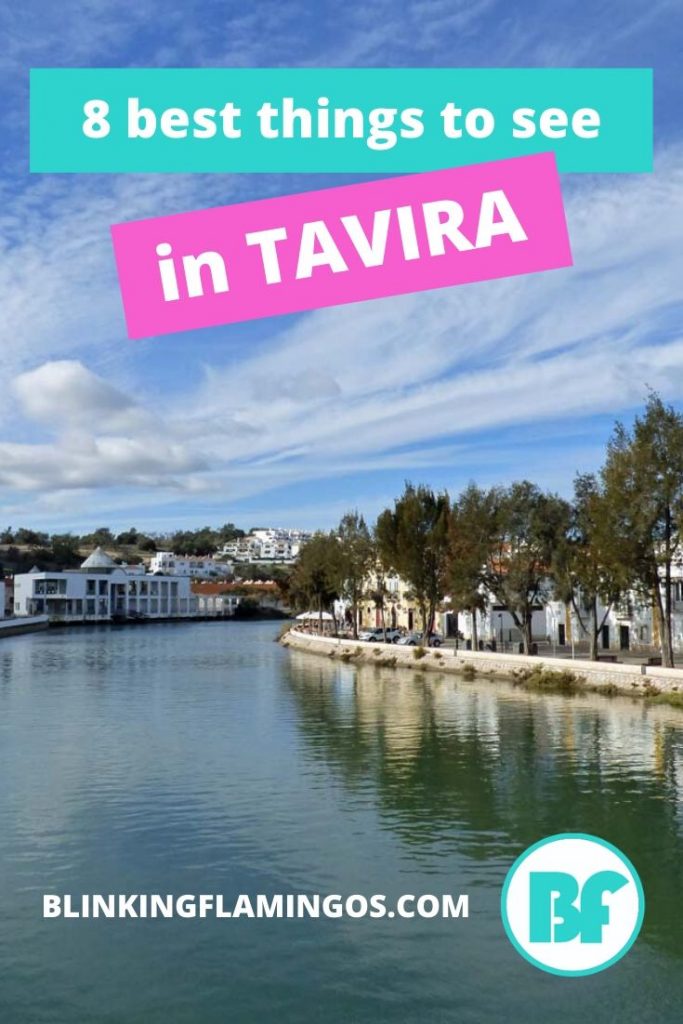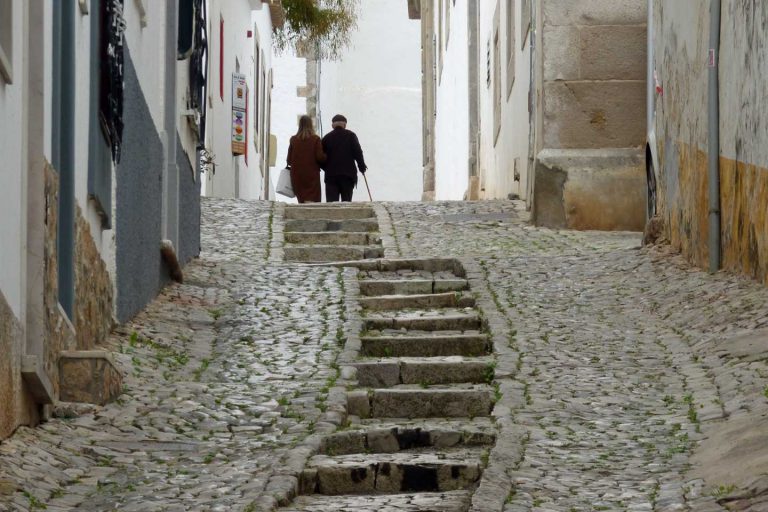Introduction
So, Tavira is the heart of the Eastern Algarve, a town of opposites. But it’s also a town full of life and culture.
Dating back to the Bronze Age, it’s had its share of ‘0ccupiers’: the Romans (well, just down the coast anyway), the Phoenicians, and the Moors – until in 1242, the locals took back the town.
But the Moors certainly left their mark, building the castle, and a couple of mosques, one of which was replaced by the current church of Santa Maria do Castelo in the 13th Century.
In 1755, the great earthquake destroyed many buildings, and much of Tavira had to be rebuilt. Despite this, it retains its share of older structures.
So, there’s plenty to see in Tavira, and plenty of ‘culture’ available to those who enjoy it.
You can walk around the town easily, although it’s hilly in places, and the steps up to the castle are arduous. But it’s great to wander the narrow streets and pretty garden areas, stroll past or into the churches, and relive the history of the town.
So what have I enjoyed?
Tavira and its Churches
There are 37 churches in Tavira apparently: all different, but all interesting in their own right.
From the opulence of the Church of the Ordem Terceirade Nossa Senhora do Carmo, to the tile-fronted Chapel of Sao Lazaro or Nossa Senhora do Livramento, to the small and easily missed Chapel of Nossa Senhora da Consolacoa: the number and diversity of the churches in Tavira is something to behold.
Even if you aren’t of a religious bent, it’s still worth taking a look, if only to admire the architecture and splendour on offer.
As a small sample:
Igreja da Ordem Terceirade Nossa Senhora do Carmo (Church)
Largo do Carmo, Tavira 8800-311, Portugal
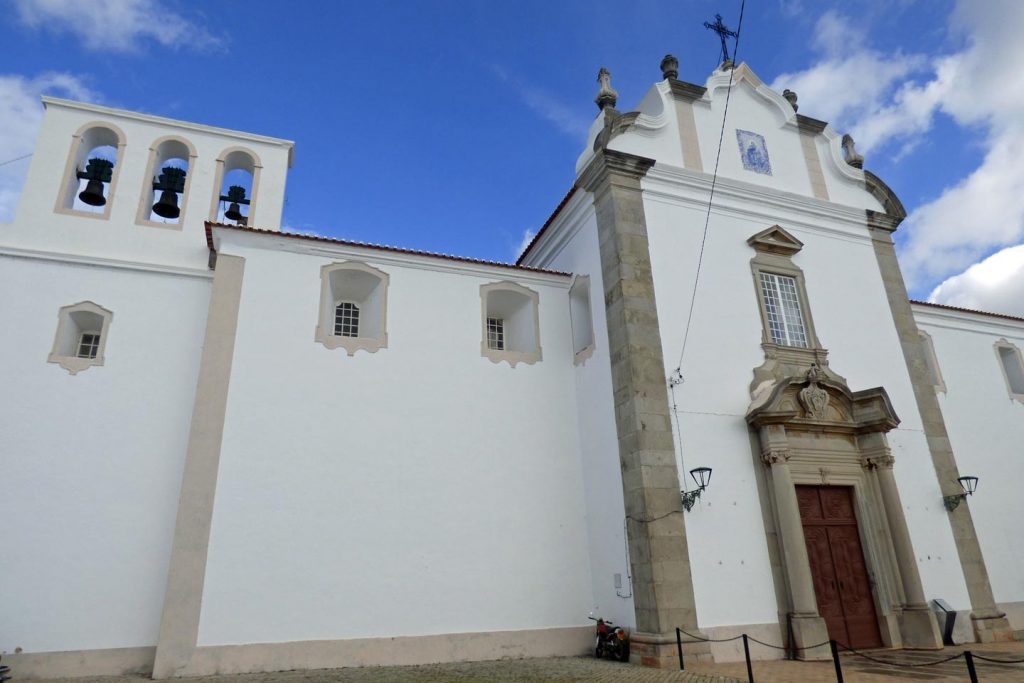
This is one of the most splendid churches on the Algarve. Building began in 1747 and was completed in 1789. It was meant to connect through to the convent church of the barefoot Carmelites, but this convent church was never finished.
The main church is built in the shape of a Latin Cross, with its magnificent, carved altars rising above.
Ermida de São Brás (Chapel)
Rua do Oculo, Tavira 8800-341, Portugal
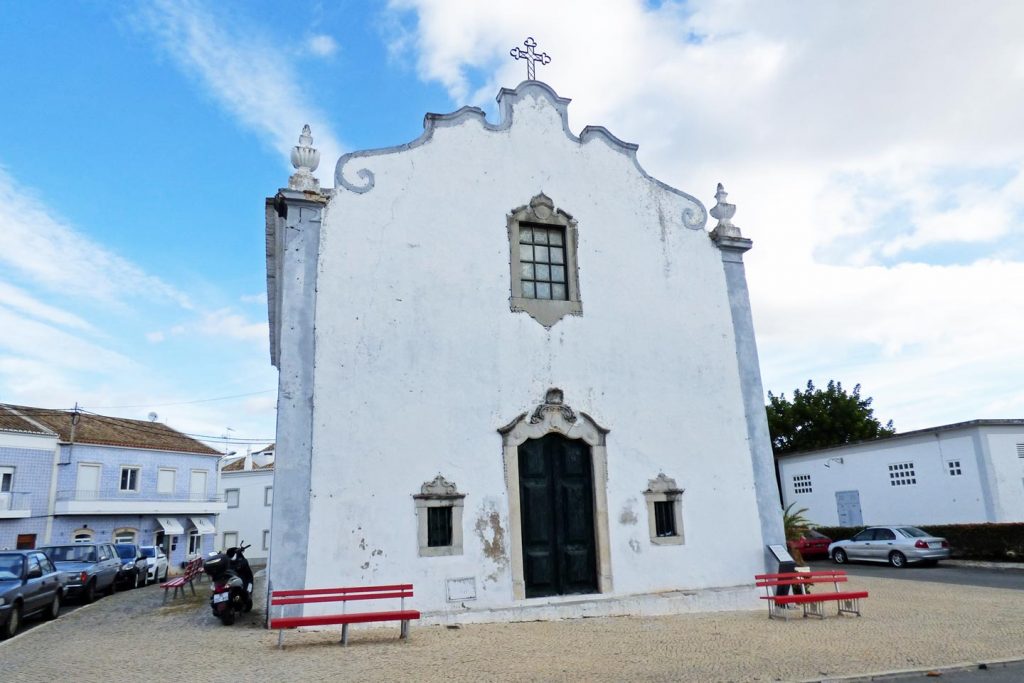
For Centuries, the now-defunct Brotherhood of Saint Blaise (Sao Bras) administered the chapel.
Dating from the 15th Century, it was dedicated to Sao Bras, who was believed to be the provider of miraculous cures. It was renovated in the 18th Century to become the structure it is today.
Ermida de São Lázaro ou de Nossa Senhora do Livramento (Chapel)
Rua Alm. Cândido dos Reis 227, 8800-318, Portugal
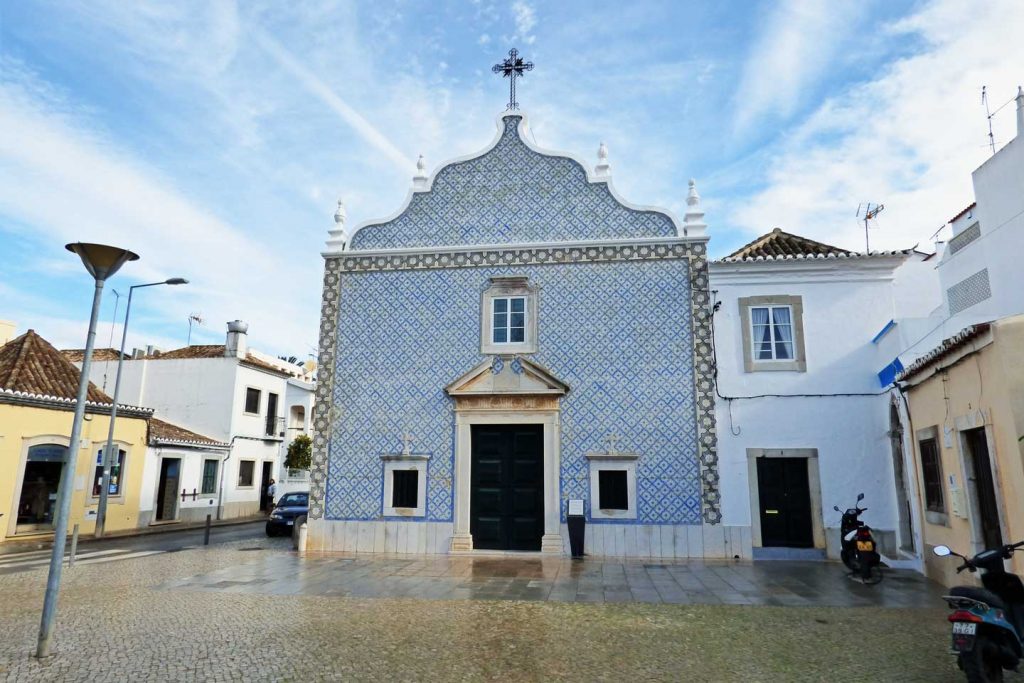
Built in the early 16th Century, the chapel was dedicated to Saint Lazarus, patron saint of lepers.
In 1698, renovation began, led by the Brotherhood of Deliverance – mainly fishermen and people who lived off the sea.
The tiles that cover the façade were added in the late 19th Century.
Igreja da Misericordia (Church)
Rua da Galeria, Travessa da Fonte, Tavira 8800-329, Portugal – The Renaissance
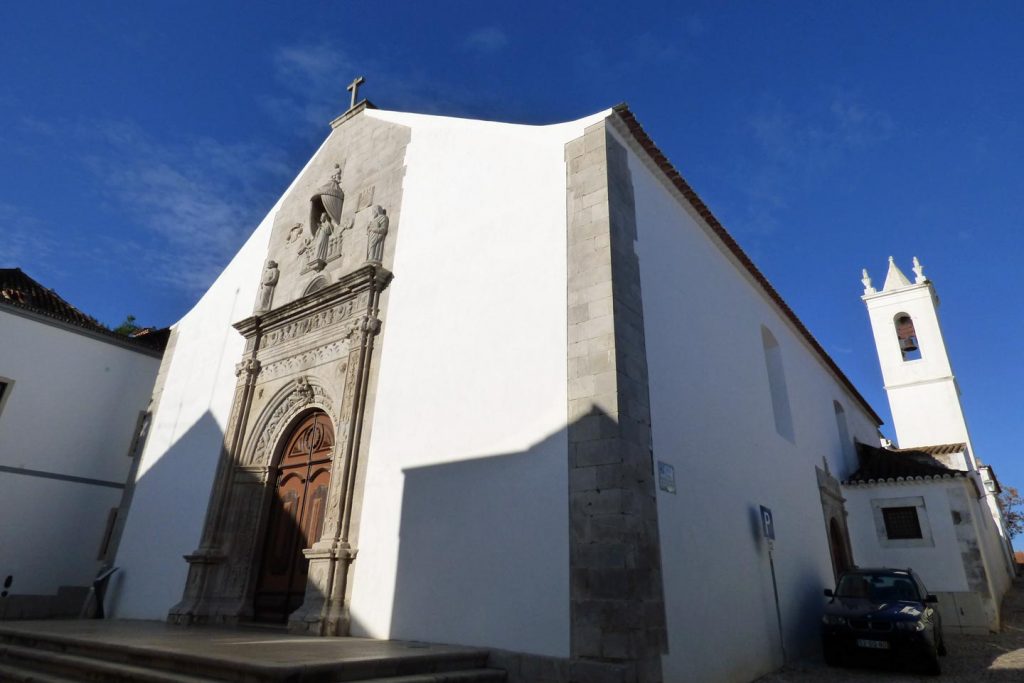
The Igreja da Misericordia is a stunning example of Renaissance architecture, one of the most important on the Algarve.
Built in the mid-1500s, the main door best shows its Renaissance origins with designs based on Italian engravings. A statue of Nossa Senhora da Misericórdia (Our Lady of Mercy) stands above, flanked by the figures of St. Peter and St. Paul
Inside the church, you’ll find three naves, with the most striking feature being the blue wall tiles, depicting the Fourteen Works of Mercy. They date from 1760.
You can visit the church for a small fee, but it’s well worth the visit!
Igreja Matrix de Santa Maria do Castelo
Rua Dom Paio Peres Correia 42, 8800-407 Tavira, Portugal
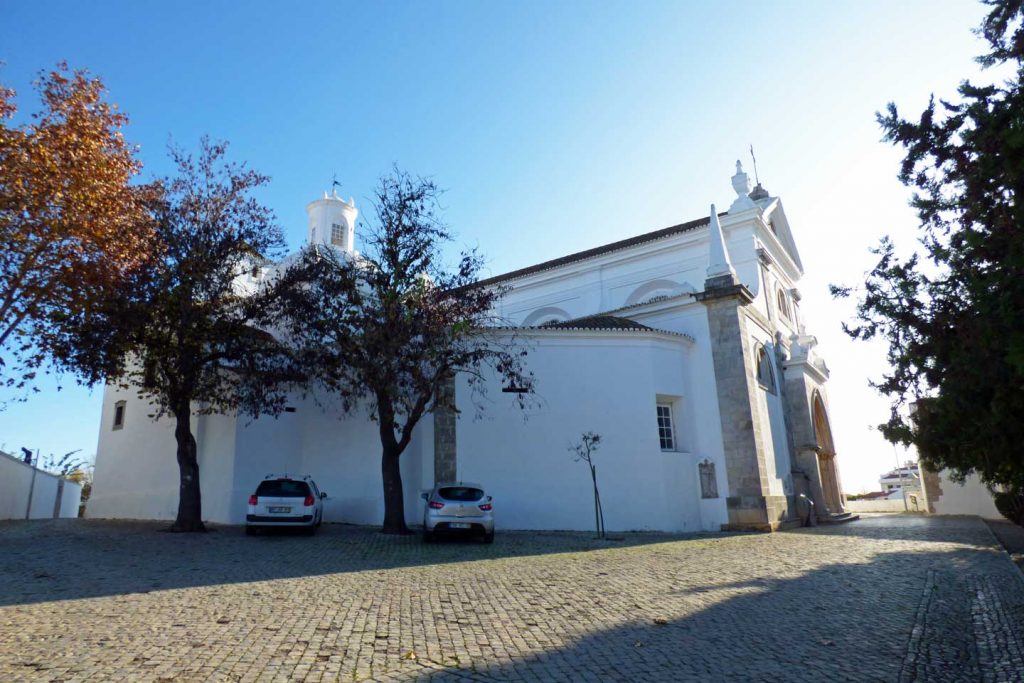
In 1242, Tavira was retaken from the Moors, and where a mosque once stood,, the Order of Santiago built the Igreja Matriz de Santa Maria do Castelo, a short distance from the castle.
The great Earthquake of 1755 caused major damage, and it wasn’t until 1790 that work began to rebuild it.
What’s left of the original church? Maybe some of the stone portal and the clock tower.
Inside you’ll find statues and blue and white tiles. There’s also a tomb containing the bodies of seven knights, the seven knights whose deaths in an ambush led to the revolt of 1242 that pushed the Moors out of Tavira.
A climb up the bell tower for a small fee is well worth it – there’s a fantastic Panoramic view over Tavira and the surrounding area, down to the Ria Formosa and the Atlantic.
Igreja de Santiago de Tavira (Church)
Rua D. Paio Peres Correia 42, Tavira 8800-407, Portugal
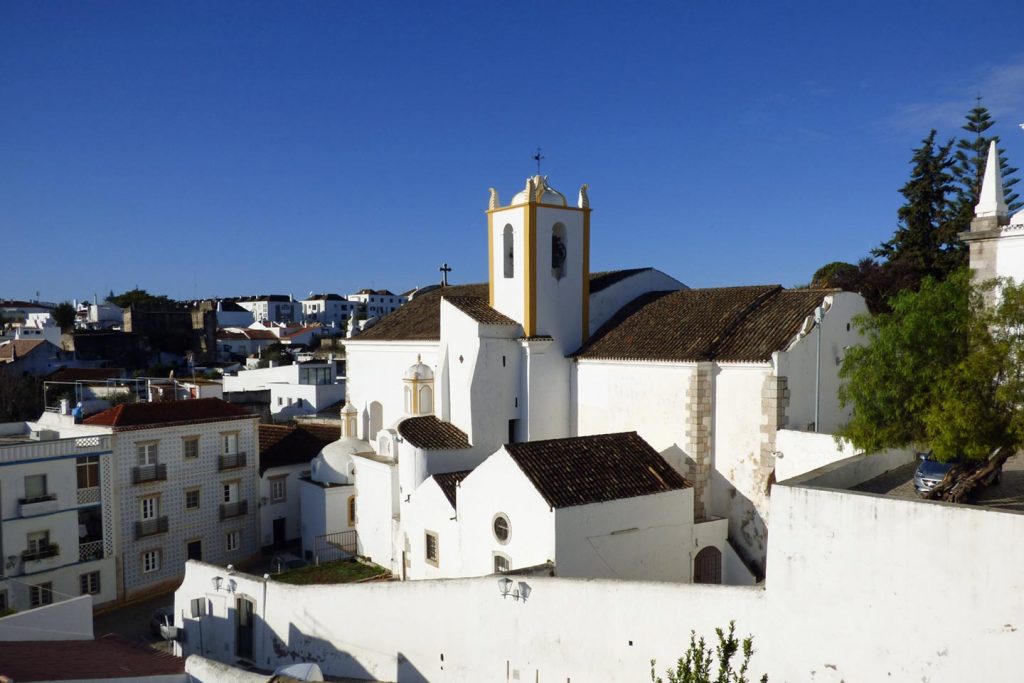
The Igreja de Santiago was originally built in the 13th Century. It is a fairly plain Church, having been rebuilt after the great earthquake when times were hard – the poverty of that time being reflected in the style of the church.
Capela de Nossa Senhora da Consolacao
R. da Liberdade 79, 8800-399 Tavira, Portugal

The old Tavira prison used to lie behind the Capela de Nossa Senhora da Consolacao but was demolished in 1918.
The church itself was founded in 1648, the same year as the brotherhood of Nossa Senhora da Consolacao was founded – Our Lady of the Consolation of Prisoners.
The brotherhood provided spiritual guidance for the prisoners, and it’s said that condemned prisoners spent their last hours in the church.
The altarpiece consists of a set of six 17th Century paintings alluding to the life of the Virgin, painted by local artist Joao Rodrigues Andino (1635-1694).
O Castelo de Tavira
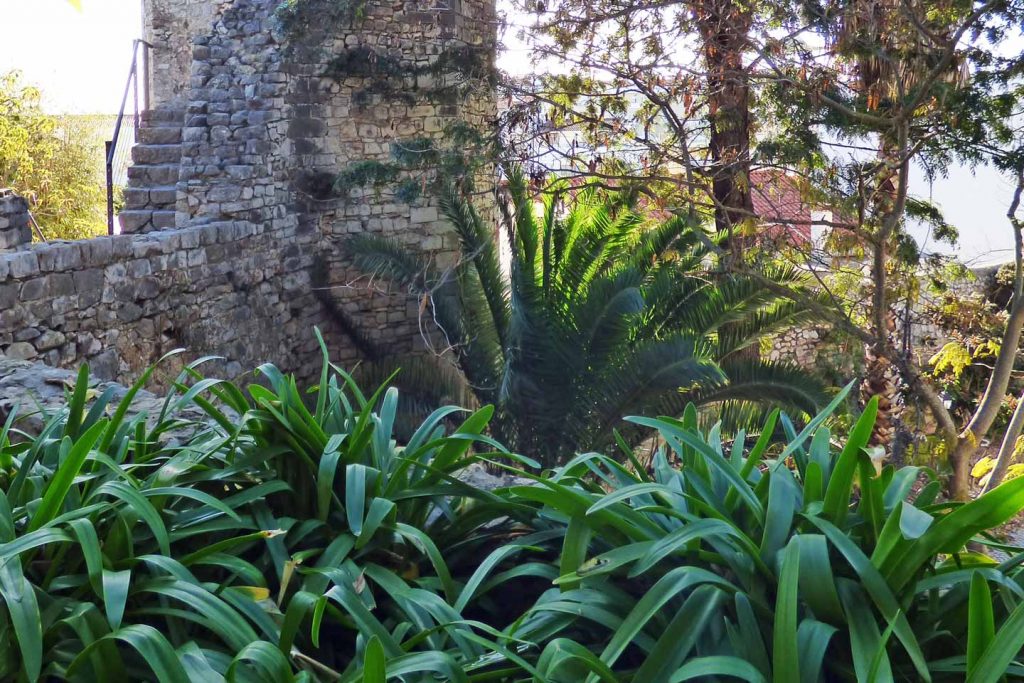
The Castelo de Tavira was built by the Moors during their period of occupation.
In 1242, the Ordem de Santiago overcame the Moors, taking back the town and the castle with it. King Dinis subsequently expanded the walls, and in fact, by the late Middle Ages, the castle encompassed an area of over 12 acres, defending the town first against the Moors, and then against pirates.
Today, the main area of the castle holds a small, well-maintained garden. When I was last there, there were a couple of guys busking, creating a lovely atmosphere.
Entry is free, and you can access the ramparts and a couple of towers to get a wonderful view over the town.
If you wander down towards the Igreja Matrix de Santa Maria do Castelo, you can see parts of the old city wall standing above the houses crammed in below.
It’s well worth a visit, although the route up may be a little too much for some. But free entry to Tavira’s most visited attraction? I’ll take that.
The Tavira Markets
Mercado da Ribeira
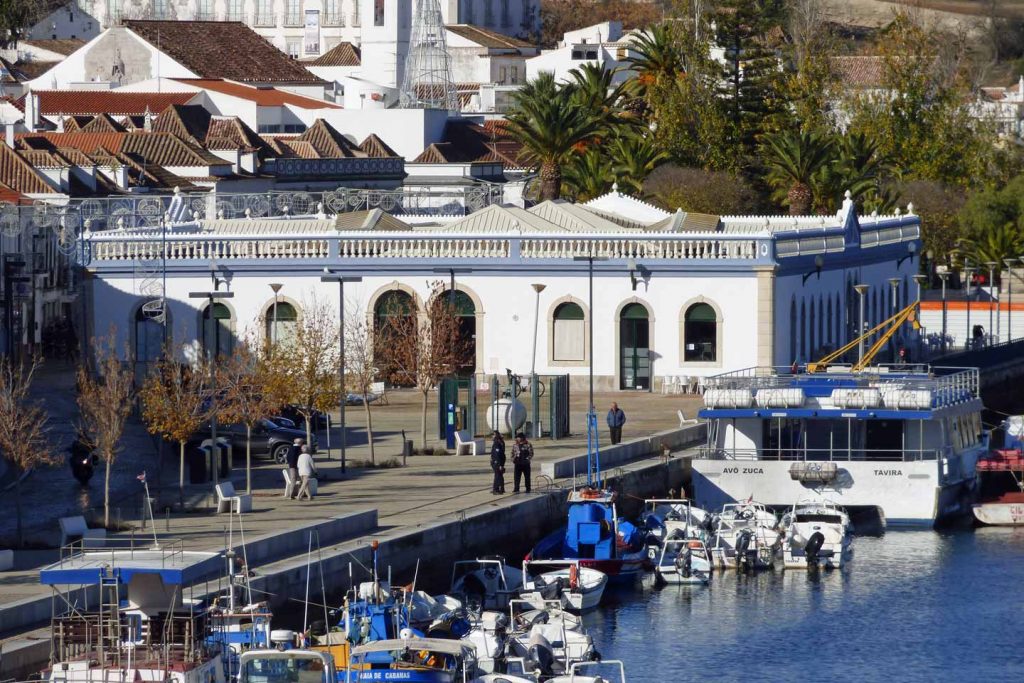
The old Mercado on the banks of the Gilao was opened on 30 June 1887, having taken two years to build.
Before this, the market had taken place in the Praca da Republica.
The new market building was built for reasons of hygiene, and to control what was being bought and sold.
It was renovated in 2000, and now houses various shops and cafes. It’s worth a look, but isn’t particularly exciting.
Mercado Municipal de Tavira

The Mercado Municipal de Tavira is a large building on the south side of the town, on the Avenida Dom Manuel I, and has replaced the Mercado de Ribeira.
It’s open every day (except Sunday), from early morning (between 6:30 and 7:30 depending on the time of year) until 3pm.
If you want to get a sense of local life here on the Algarve, the Mercado is a great place to go. It offers fresh fare: fruit and veg, fish, meat, honey, charcuterie. There are cafes, there is ‘hustle and bustle’. There are people looking, people buying, people chatting.
On the first Saturday of every month, there is a flea market in the car park. If you like vinyl records, Joe’s Vinyl Shack is usually there. Apart from that, I haven’t found much to interest me.
But as I said, it’s worth a visit just to see Portuguese life in full flow!
The Gilao River and its Bridges
The Gilao River runs through the centre of Tavira, snaking it’s way down to the Atlantic, crossing the Ria Formosa on its route.
Along the banks of this river, Tavira has grown and flourished, then declined, then found its way once more until it has become the town it is today.
From the time of the Phoenicians, throughout the Moorish period and after Paio Peres Correia took the city back in 1242, Tavira was a major trading centre due to its close proximity to North Africa.
During the course of the 17th Century, trade began to dwindle as the Gilao silted up.
Following the plague in 1645 and the great earthquake of 1755, things only declined further.
Eventually, Tavira found a more stable industry in Tuna fishing and its related canneries, until by the 1950s, this too had declined.
Nowadays, it’s tourism that’s the lifeblood of Tavira, another industry centred around the Gilao, but now providing access to Ria Formosa and the sandy beaches of the Ilhao da Tavira rather than the markets of North Africa.
To connect one side of the city to the other, there have always been bridges. Heading south down the river from the road bridge that carries the EN125, you’ll see:
Ponte Ferroviaria de Santa Maria

This is the iron bridge that carries the train between Faro and Vila Real de Santo Antonio. Opened in 1906, there’s not a lot more to say!
Ponte de Santiago

The Ponte de Santiago is a simple road bridge, with a separate cycle path and footpath. Opened in 2003, there’s not a lot more to say about this either!
Ponte Antiga Sobre o Rio Gilao (the Ponte Romana)
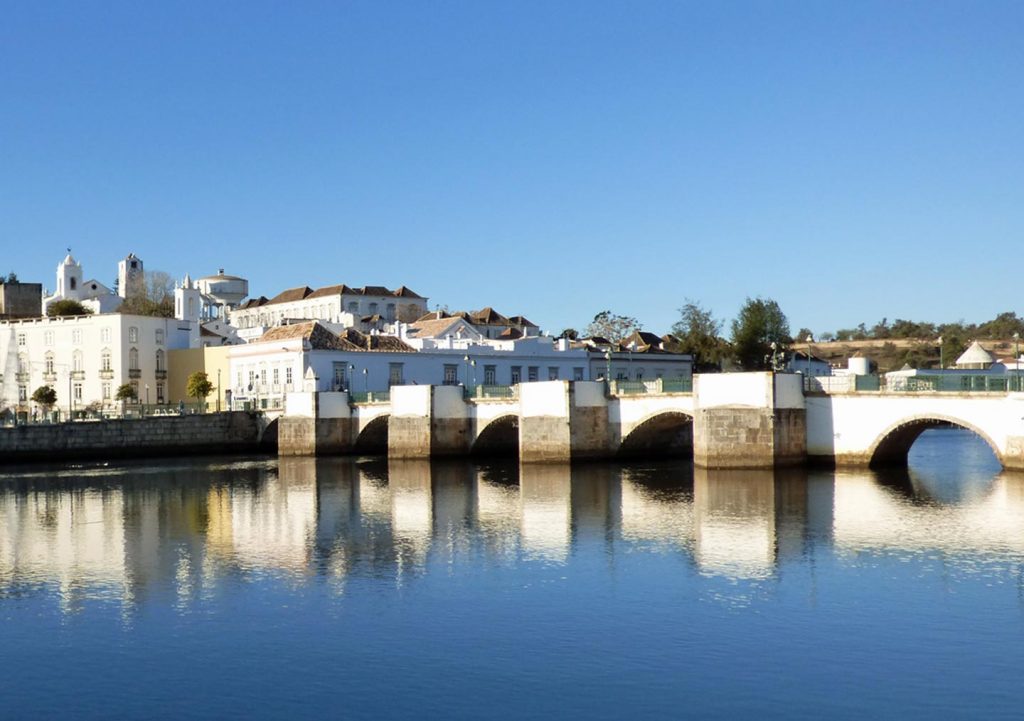
Known as the Ponte Romana, the Roman Bridge still crosses the river today. It was said that this bridge helped form the main Roman route from Castro Marim to Faro, but more recent archaeological investigations suggest that its origins were much later and that the Moors, in fact, built the bridge.
What isn’t in doubt is that the current bridge was built in 1697, and certainly isn’t the original.
Until 1989, motor vehicles were allowed to cross the bridge, but after it was badly damaged by flooding it became foot traffic only – oh, and bicycles as well.
Today, its seven arches support a road of cobbled stones, on each side of which you will see huge flagstones, rubbed smooth by centuries of pedestrians.
Locals use it to cross the river, the town uses it as a tourist attraction, buskers and beggars use it, hoping to make money from the tourists.
It’s definitely worth a look, and you’ll find that it’s still the main route across the river.
Ponte das Forcas Armadas
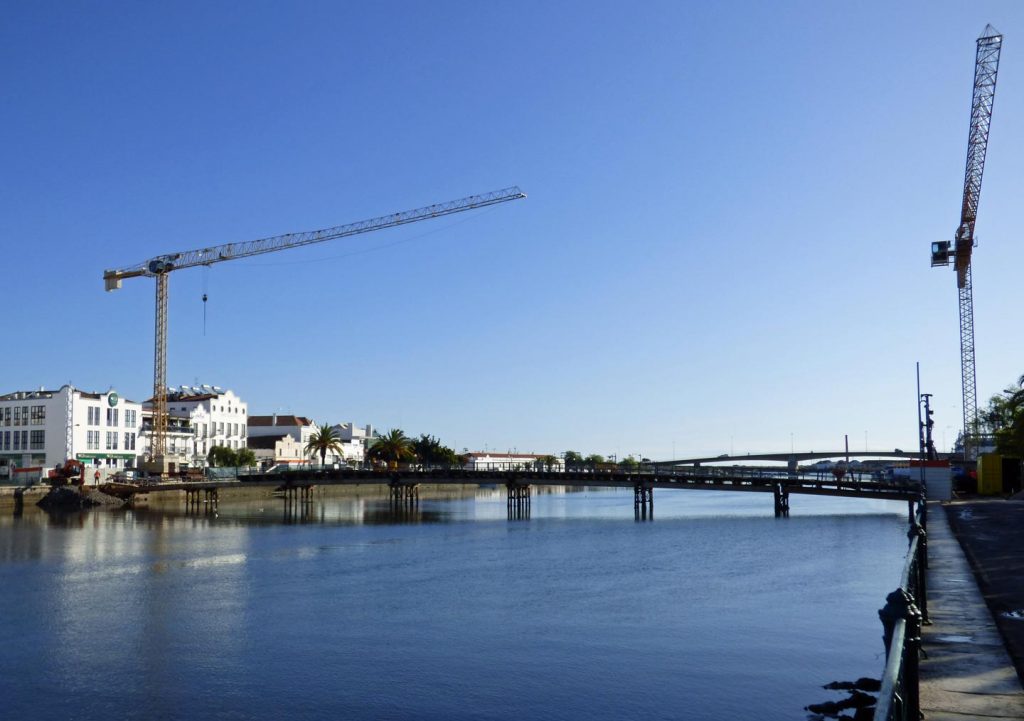
Built as a temporary solution in 1990, the Armed Forces Bridge spanned the Gilao for 28 years. Eventually, however it could take no more. It’s due to be replaced by a new concrete structure, with a road, cycle path and footpath. But the design has split the people of Tavira. The idea is to build something that doesn’t overpower the Ponte Romana. We’ll see.
Ponte dos Descobrimentos
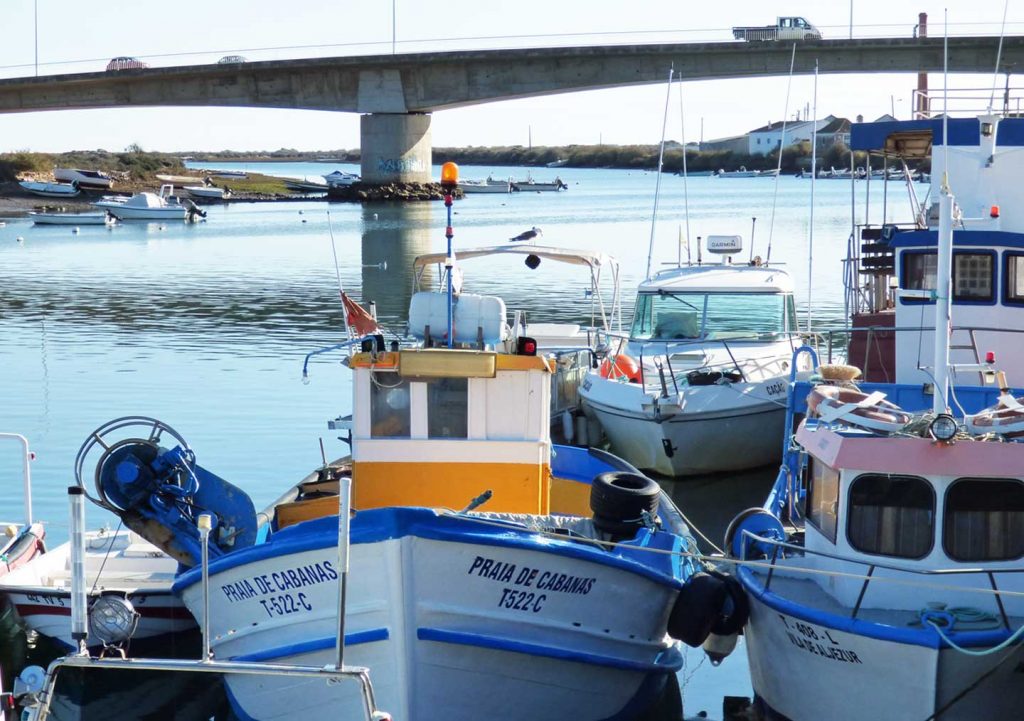
The Ponte dos Descobrimentos takes the Avenida Dom Manuel I across the Gilao, the last bridge before the Ria Formosa and the Atlantic.
It’s a major road bridge that offers a fantastic view up the Gilao to the old town of Tavira. It’s also part of the Ecovia Litoral, the cycle route that runs all the way along the Algarve from Cape St Vincent to Vila Real de Santo Antonio. As such, it has a single blue line running along the road in each direction. Follow the Blue Line, as the book says!
The Bridge at Cabanas
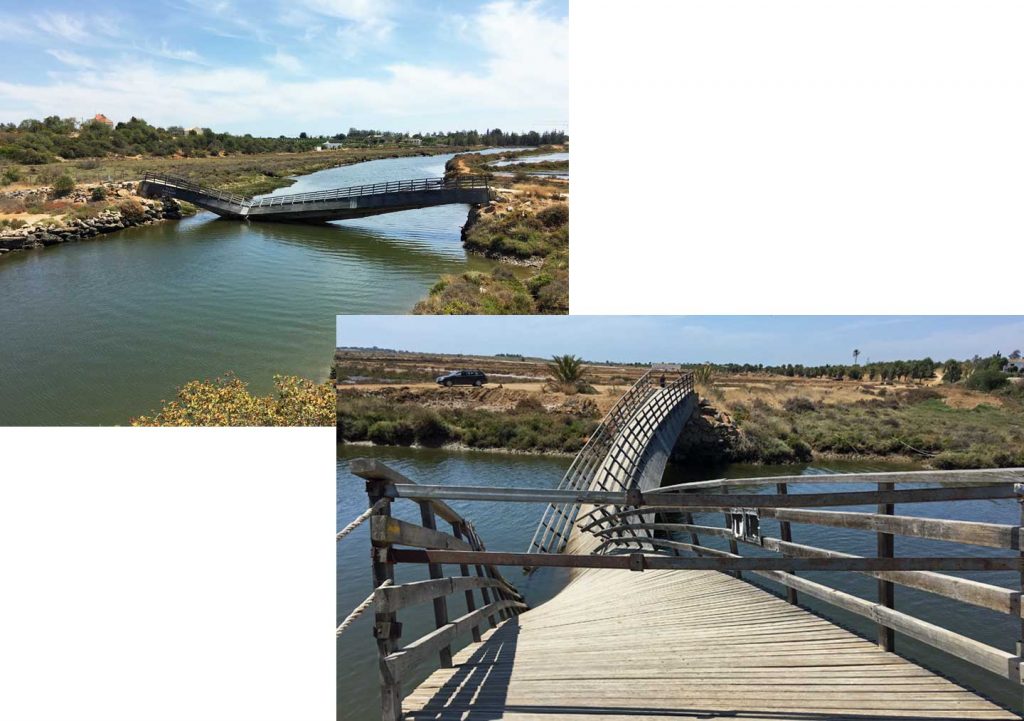
One bridge in the area also worth mentioning is the ‘Bridge at Cabanas’ as it’s known, a mile or so east of Tavira. It spans the Ribeiro do Almagem, or rather it did.
It supposedly carries the Ecovia Litoral across the river, but for as long as I’ve been coming to this area, it’s had barriers at both ends to stop people using it, as it slowly twisted and sagged into the water below.
It’s now been removed, since it finally collapsed into the river, and will supposedly be replaced shortly. We’ll see.
Gardens and Squares
Near to the centre of Tavira, you’ll find several squares and gardens.
The main square is the Praca da Republica, a paved area near the Ponte Romana.
Close by there are also a number of gardens.
Why not take a stroll through one of them? Or maybe stay longer! It’s wonderful to simply sit and watch the world go by.
In the heat of the summer, the gardens offer shade from the rigours of the sun. The rest of the year, they’re simply a pleasant place to go.
Near to the Ponte Romana, you’ll find the following:
The Praca da Republica
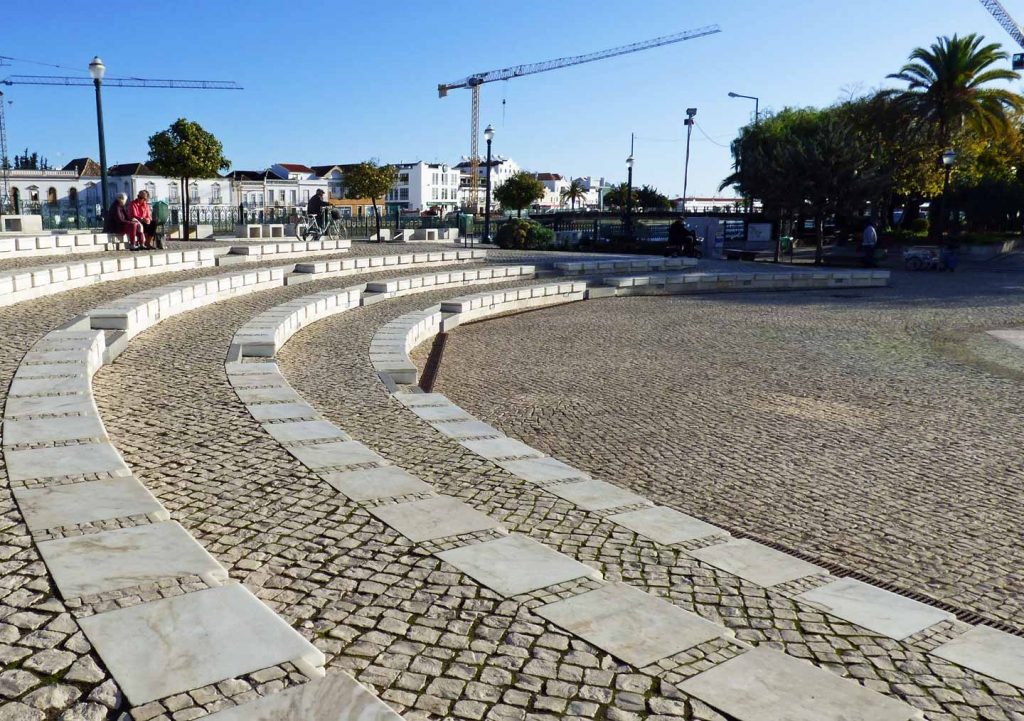
The Praca da Republica lies on the western side of the Ponte Romana, surrounded by a couple of bars/restaurants, the Camara, the Tourist Office, a museum, and lying in the shadow of the castle. it offers seating in the form of a small amphitheatre, centred on a performing area.
When Tavira puts on outdoor musical or theatrical events, this is where it all tends to happen!
The Jardim Publico de Tavira
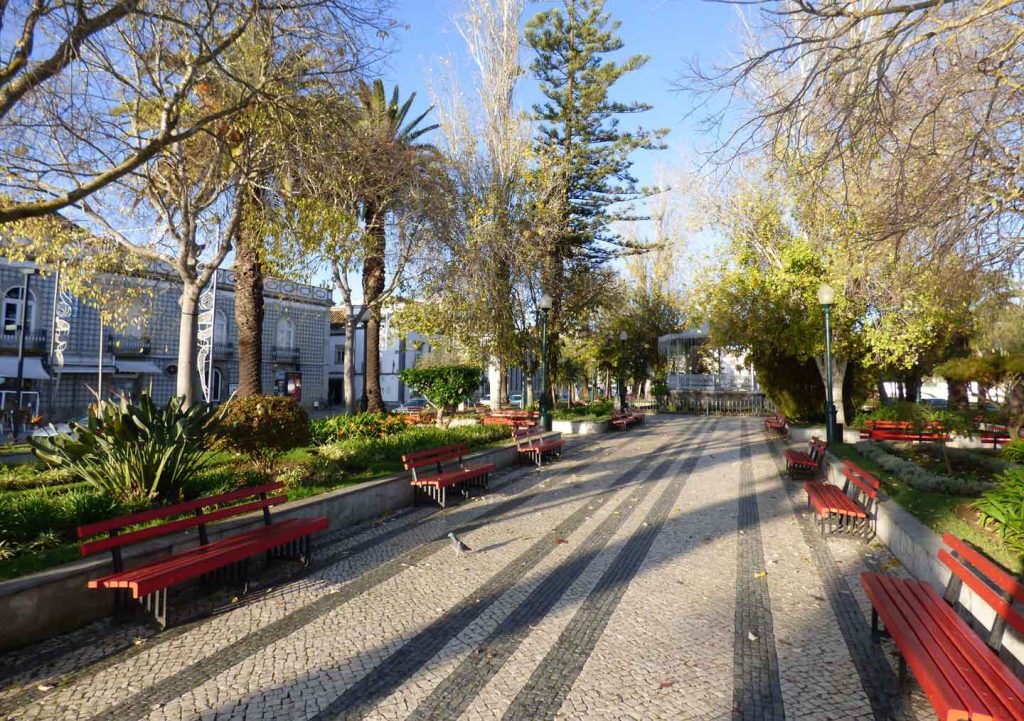
This garden sits on the banks of the Gilao, running down from the Praca da Republica to the Mercado da Ribeira. It offers a bandstand (surrounded by the ‘Fontaine aux Tortues’ – Turtle Fountain), rows of palm trees, and plenty of shade for those hot, sunny days.
If you’re lucky, you might find the odd busker here, or a performance of some sort. If not, what you’ll definitely find will be older people, strolling, chatting, sitting on the benches, socialising. It’s a nice, relaxing place.
Jardim da Alagoa
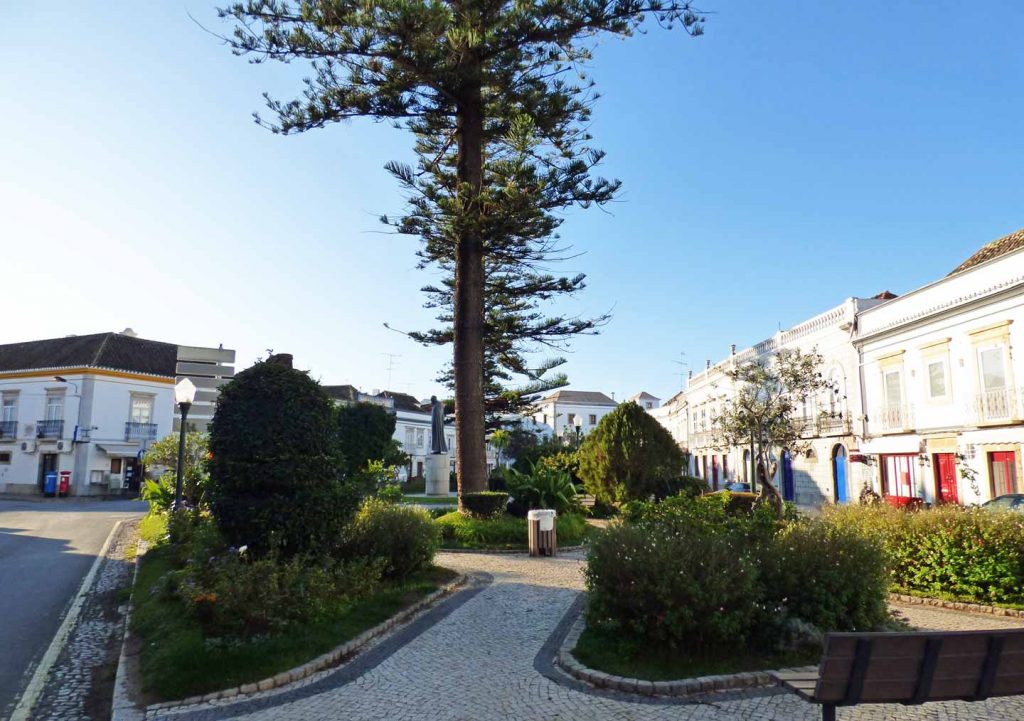
The Jardim da Alagoa sits between the Ponte Romana and the Igreja de Nossa Senhora da Ajuda ou de São Paulo (Church) in the Praca Dr. Antonio Padinha. It’s not too big, but offers a green oasis amongst the restaurants, cafes and bars on this side of the river.
In the middle sits a statue of Dom Marcelino Franco (1871-1955), the Bishop of the Algarve.
The Castle Garden
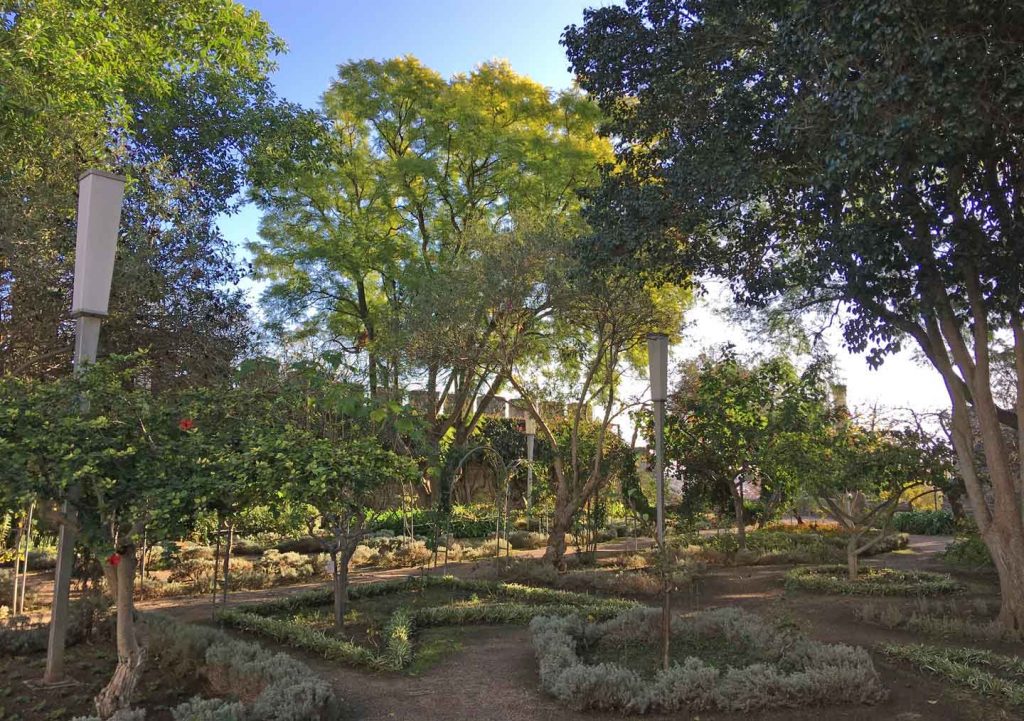
If you wander up to the castle, within the walls you’ll find a small but neat garden. When I was last there, I found a gardener beavering away. I was impressed with the results. Once again, it’s a nice shady area to escape the sun.
Jardim do Largo Dr Jorge Correia
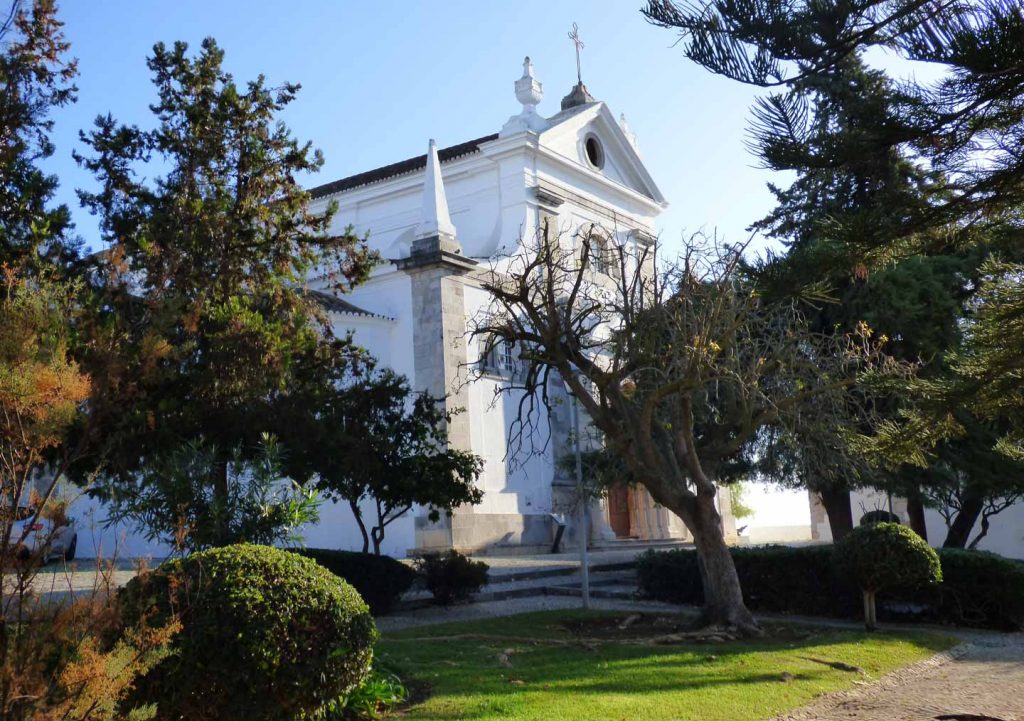
The Jardim do Largo Dr. Jorge Correia lies up near the castle, between the Igreja de Santa Maria do Castelo, the Igreja de Santiago and the Pousada Convento Tavira (a classy hotel that used to be a convent).
It’s a quiet area, surrounded by history – a great place to soak up the atmosphere of Tavira.
Museums and Art Galleries
If you enjoy seeing what museums and art galleries have to offer, then Tavira’s Museu Municipal should keep you occupied for a while!
Palacio da Galeria
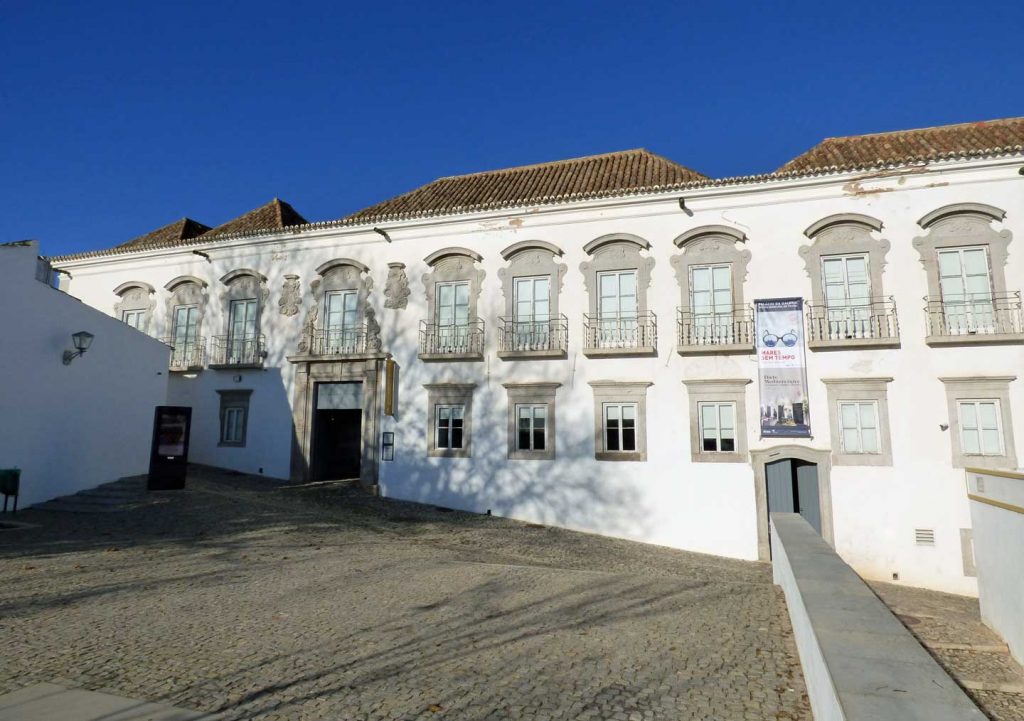
The Palacio da Galeria from the 16th Century or earlier was rebuilt in the 18th Century on the site of a Phoenician settlement.
It is the central hub of the Tavira Municipal Museum, opened in 2001. It provides visitors with the chance to learn about Tavira’s history and heritage, but also holds exhibitions of contemporary art.
Opening Hours: Tuesday to Saturday 10am-12:30pm and 2pm-5:30pm (3pm-6:30pm in winter)
Palacio de Galeria
Address: Calçada da Galeria, 8800-306 Tavira, Portugal
Museu Islamico

The Museu Islamico opened in 2012, showcasing a huge collection from the Islamic period.
Museu Islamico
Address: Praca da Republica 5, Tavira 8800-316
Centro Interpretivo de Abastecimento de Agua a Tavira
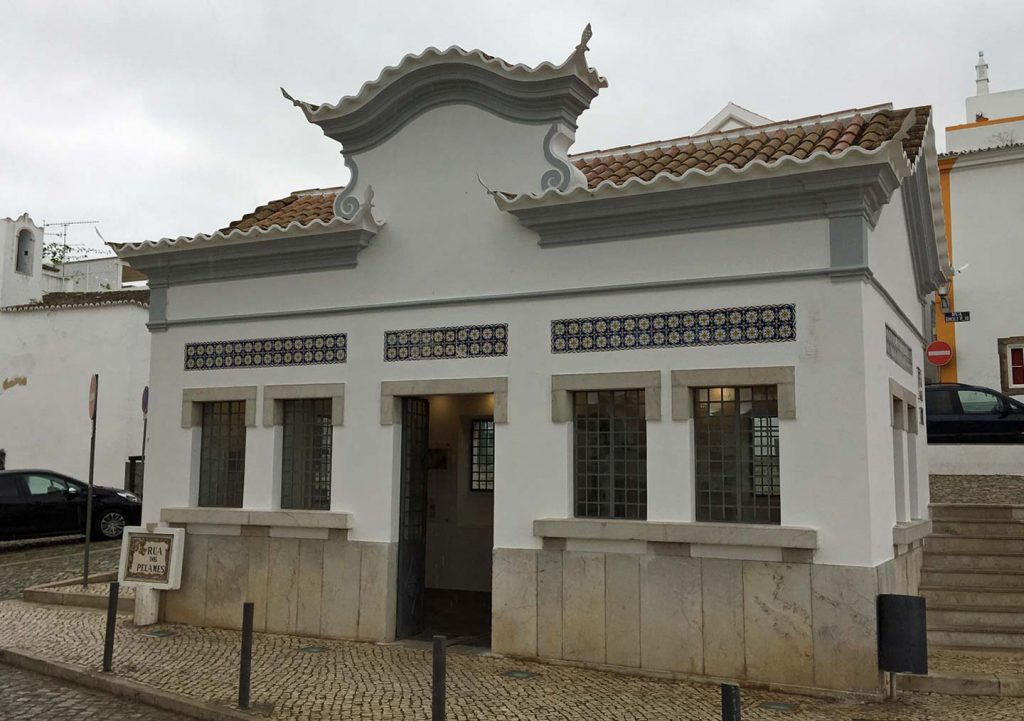
In 2009 the old pumping station was renovated and became part of the Museu Municipal de Tavira, highlighting the importance of the water supply to Tavira throughout the ages. It’s only a single room with an old pump in it, but there is some interesting information on the boards around the walls.
Centro Interpretivo de Abastecimento de Agua a Tavira
Address: Rua dos Pelames, Tavira 8800-316
Tavira d’Artes
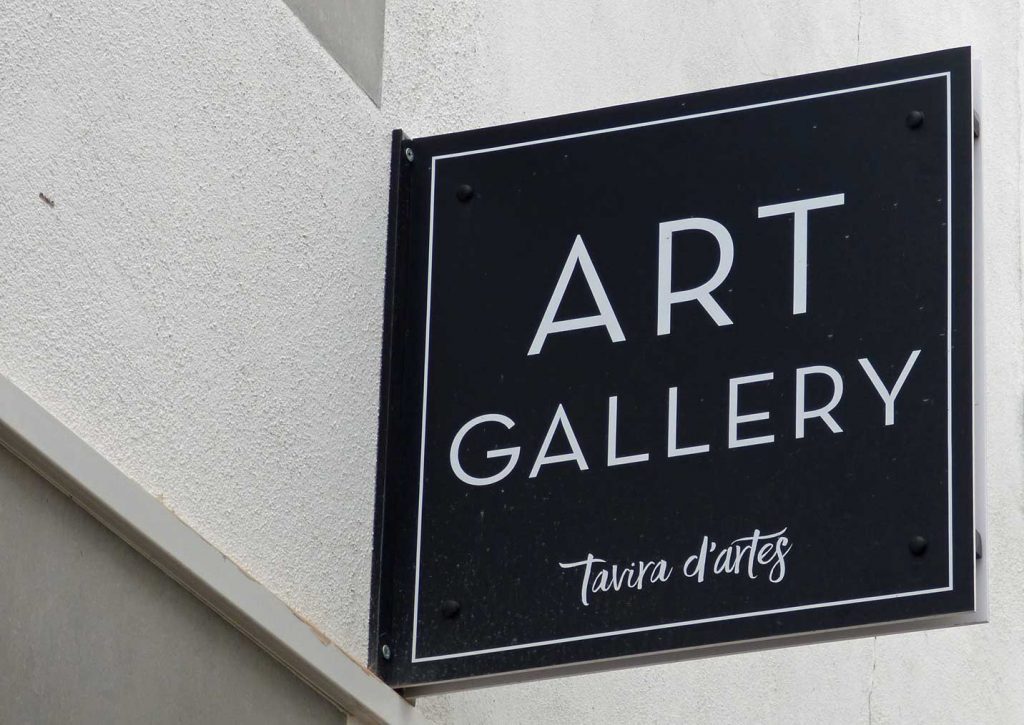
Created to support and popularise local, national and international artists and their art, Tavira d’Artes offers a constantly changing exhibition.
Tavira d’Artes
Address: Rua 4 de Outubro 24, Tavira 8800-362, Portugal
Visit Forte do Rato / Forte de Santo António de Tavira
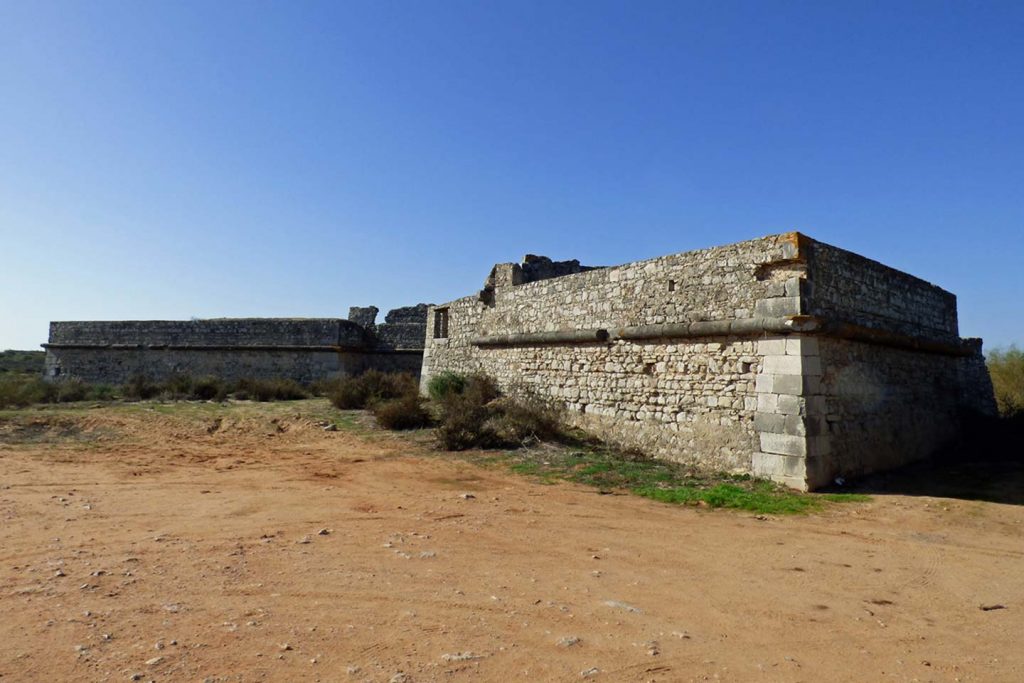
The Forte de Santo António de Tavira, also known as Forte do Rato (Fortress of the Mouse) can be found just east of Quatro Águas, at the confluence of the Gilao and the Ria Formosa – head for the Gran Plaza (the large ugly building with Continente written on the side) and at the roundabout, head south out across the saltpans. Eventually, you will reach the fort.
It was built in the second half of the 16th Century to protect the mouth of the Gilao, and hence Tavira, but from the time it was built there was a problem – the coastline was constantly changing, and the defensive position of the fort was greatly diminished once the mouth of the river changed.
By 1840 it was abandoned altogether.
Today it is still abandoned. It’s not in a great state of repair, but you can walk around it and get a sense of what it would have been like to soldier there, protecting the City of Tavira behind.
Camera Obscura
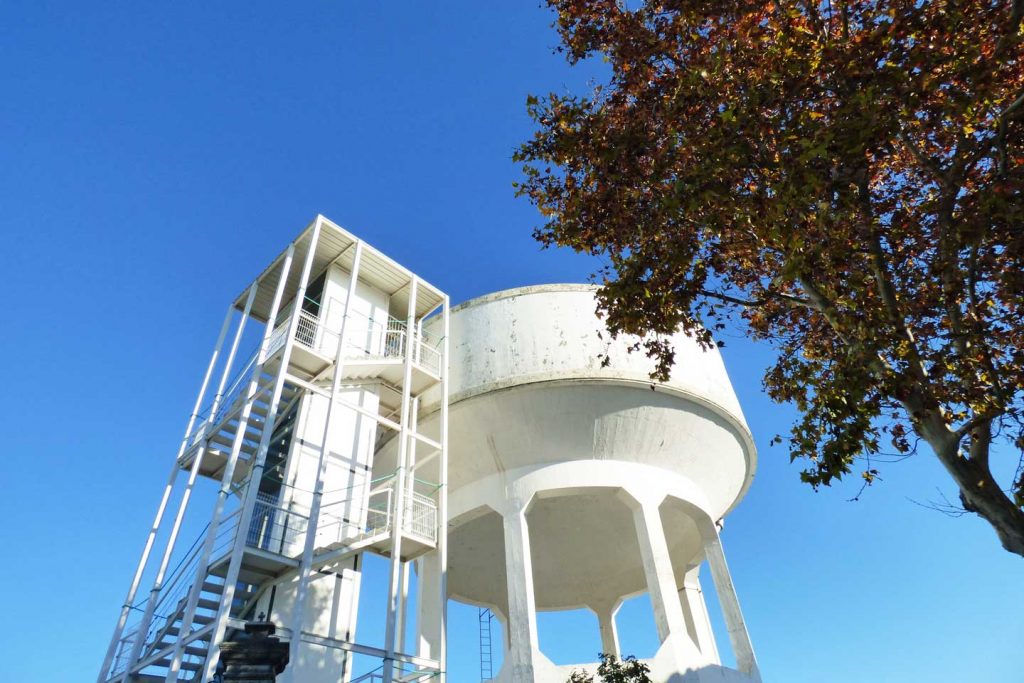
A Camera Obscura uses the idea that when light enters a dark space via a small entry point, an inverted image of an object will be produced on the wall opposite.
The Camera Obscura in Tavira is a converted 1930s water tower (also known as the Torre de Tavira), and a great way to see Tavira, providing a 360-degree view.
It’s 100m above sea level and can facilitate 15 people with a guide. You reach the tower via a lift.
